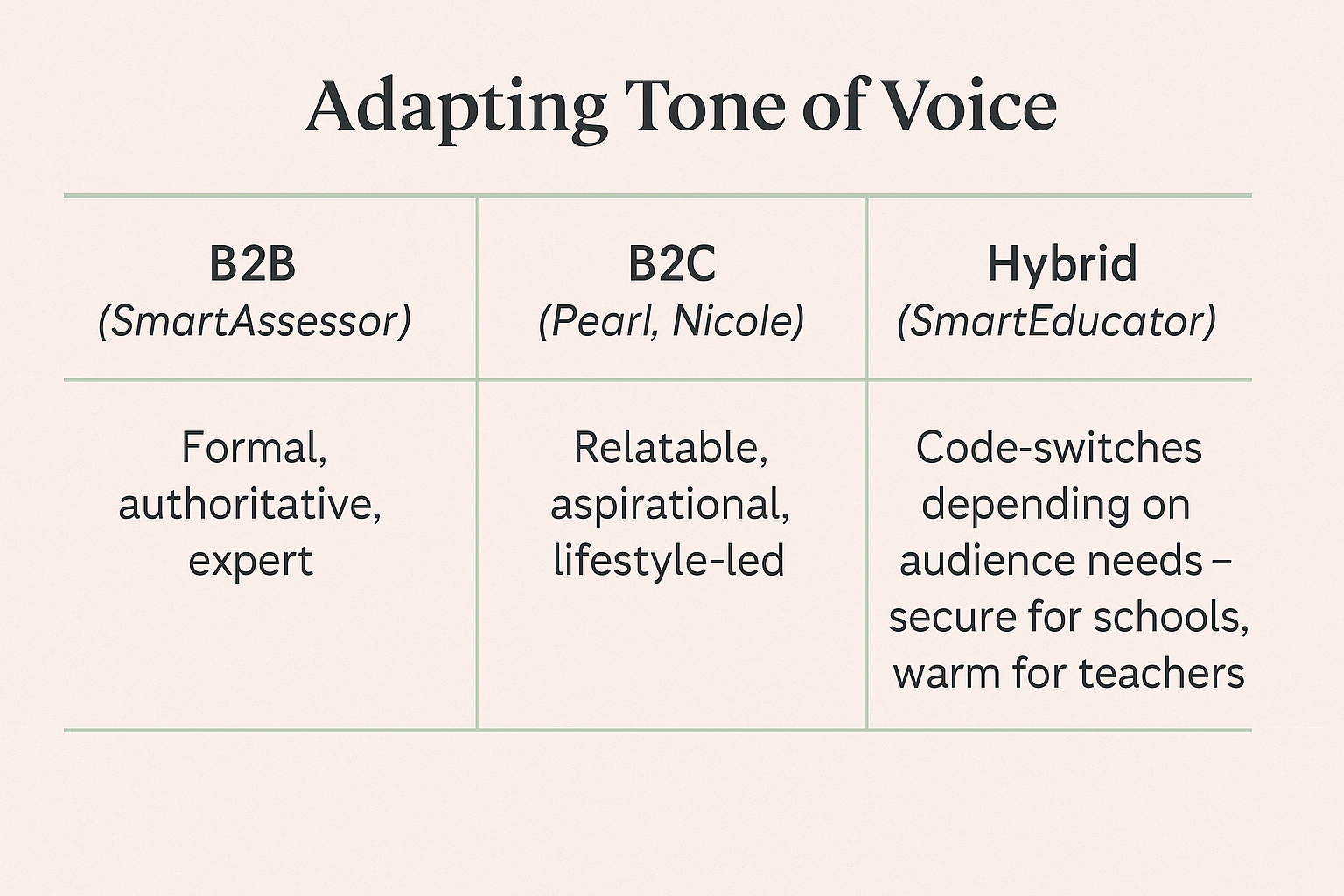The Psychology of Brand Trust in 2025: How to Win Customers in an AI-Driven World
Discover the psychology behind brand trust in 2025. Learn how brands like Pearl Yachts, SmartEducator, and Nicole Wright Fitness build trust through consistency, tone, responsiveness, and proof; even in an AI-automated world.t all begins with an idea.
Why Trust is the Ultimate Marketing Strategy in 2025
In a world of AI-generated content, automated funnels, and endless digital noise, one thing hasn’t changed:
People buy from brands they trust.
It doesn’t matter whether you’re selling:
A £4 million yacht,
An AI platform for education,
A compliance automation tool,
Or a premium fitness coaching programme...
Trust is the currency that converts.
This article explores the psychology of brand trust in the digital era; with real world examples from brands I have worked with (all with very different clients) Pearl Yachts, SmartEducator, SmartAssessor, and Nicole Wright Fitness. Whether you're in B2B, B2C, or a hybrid model, these strategies apply.
What Builds Brand Trust? (Backed by Psychology)
Psychology tells us that trust forms when customers feel:
✔️ Safe: Financially, emotionally, and reputationally.
✔️ Seen: Understood, respected, and recognised.
✔️ Certain: Confident that promises will be kept.
This applies universally; whether you’re selling products, services, experiences, or technology.
The 5 Psychological Pillars of Brand Trust
1. Consistency Equals Safety
People trust what feels familiar. Consistency in branding, tone, and delivery reassures customers that your brand is stable, professional, and reliable.
Pearl Yachts maintains visual and tonal consistency with luxury cues; elegant design, understated messaging, and timeless photography. No gimmicks, no hype; just craftsmanship and confidence.
SmartEducator adapts tone between teachers (empathetic, supportive) and schools (formal, data secure), yet the underlying brand voice stays consistent: helpful, reliable, and trustworthy.
SmartAssessor delivers a rock-solid professional presence with clear messaging around compliance, security, and automation reliability; essential in regulated industries.
Nicole Wright Fitness shows up daily with consistent messaging: strength, freedom, confidence; never veering into diet culture gimmicks.
SEO Tip: Consistency improves brand recall, increases engagement, and reduces bounce rates; factors that indirectly improve SEO.
2. Speed and Responsiveness = Reliability
Fast, human responses signal professionalism and care. Whether through email, DMs, or customer support; speed builds trust.
Pearl’s luxury clients expect discreet, immediate communication. Silence breaks million; pound deals.
SmartAssessor’s clients rely on rapid answers about compliance and integration; slow replies cause doubt.
Nicole’s clients message with concerns or questions and know they’ll be heard quickly. That responsiveness is part of her brand value.
SmartEducator’s demo and support teams understand: speed equals confidence.
SEO Connection: Fast-loading websites, live chat responsiveness, and quick contact form replies improve both trust and search rankings.
3. Tone of Voice: The Instant Trust Signal
Your tone of voice tells people whether you’re credible, relatable, or risky.
B2B (SmartAssessor)B2C (Pearl, Nicole)Hybrid (SmartEducator)Formal, authoritative, expertRelatable, aspirational, lifestyle-ledCode-switches depending on audience needs; secure for schools, warm for teachers
Pearl Yachts uses elegant, calm language: “Crafted for timeless journeys.” No shouting.
SmartAssessor speaks the language of compliance and operational reliability: “Automate certifications. Ensure compliance. Reduce admin.”
Nicole Wright Fitness communicates with calm empowerment: “Build a body you trust.” Not “Get shredded fast.”
SmartEducator balances: reassuring to teachers (“Save time. Stay consistent.”) and formal to school leaders (“ISO 27001 certified. GDPR compliant.”).
SEO Angle: Consistent tone reduces bounce rates and boosts conversion, signalling relevance to Google.
4. Visibility and Repetition = Reinforced Trust
Trust isn’t built in a single post. It’s the result of showing up; reliably, repeatedly.
Weekly newsletters.
Regular social posts.
Updated websites.
Ongoing email nurture.
Humans trust patterns. If you go dark for weeks or months, the subconscious assumption is: “They’re unreliable.”
5. Proof Over Promises
Nothing builds trust like proof. Claims are cheap. Evidence converts.
Pearl Yachts uses client referrals, yacht shows, and prestigious media features.
SmartAssessor offers case studies: “Saved 40 admin hours monthly and improved audit outcomes.”
SmartEducator shares stats like “Saved teachers 8 hours per week” and testimonials from schools.
Nicole Wright Fitness posts client wins framed around mental and physical strength; not shame or gimmicks.
SEO Note: Testimonials, case studies, and reviews improve page dwell time and trust signals to both users and search engines.
B2B vs. B2C: How Trust Is Built Differently
.
B2B (SmartAssessor)B2C (Pearl, Nicole)Hybrid (SmartEducator)✔️ Risk = Financial, Operational, Compliance✔️ Risk = Emotional, Financial, Identity✔️ Needs both lenses✔️ Trust built on process integrity, security, compliance✔️ Trust built on empathy, lifestyle alignment, and social proof✔️ Requires both✔️ Tone: Formal, authoritative✔️ Tone: Conversational, empowering✔️ Flexible while consistent
The Hidden Threat in 2025:
Automation without humanity.
If your customer experience becomes a faceless string of auto-responses, chatbots, and AI-generated fluff; you erode trust.
People don’t buy from systems. They buy from brands that feel like people.
Checklist: How to Build Brand Trust Today
Consistent branding, tone, and experience
Fast, human responsiveness
Copy that mirrors real customer fears, hopes, and language
Reliable presence (newsletters, content, updates)
Proof: case studies, reviews, testimonials woven into marketing
Conclusion: Trust Is the New Growth Strategy
In an AI-driven, noisy world, trust becomes the loudest signal.
If someone’s buying a yacht, an edtech tool, or a fitness transformation; they are not buying features.
They’re buying certainty. Safety. A future version of themselves they trust…They are investing in the way your brand makes them feel.
Trust isn’t a checkbox. It’s a strategy. A feeling. An outcome of every word, every reply, every experience.



